Our Own: The Regiments
When World War I broke out, Canada’s minister of militia decided to mobilize by raising numbered battalions rather than by maintaining the existing militia regiments intact. That decision has led to some confusion in the numbering system and some duplication. Canada ultimately offered four divisions under the Canadian Corps. Here are some of the regiments and battalions mentioned in this book. Thanks to the Department of National Defence site and Wikipedia for background.
Contents
Regiments of British Columbia
Other Prominent Regiments in Which British Columbians Served
Sidebar: From Our Listeners
2nd and 11th Canadian Mounted Rifles (BC Dragoons)—see also BC Horse
This reserve force regiment originated in Vernon on April 1, 1911, when two four-squadron regiments designated the “British Columbia Horse” were authorized to be formed. It was redesignated the 1st Regiment, British Columbia Horse, on December 1, 1911, and 30th Regiment, British Columbia Horse, on April 15, 1912.
The 2nd Canadian Mounted Rifles Battalion was authorized on November 7, 1914, as the 2nd Regiment, Canadian Mounted Rifles, Canadian Expeditionary Force (CEF). It disembarked in France on September 22, 1915, as part of the 1st Canadian Mounted Rifles Brigade. It fought as part of the 8th Canadian Infantry Brigade, 3rd Canadian Division, in France and Flanders until the end of the war.
The 11th Regiment, Canadian Mounted Rifles, CEF, was authorized on November 7, 1914. The regiment was converted to infantry and redesignated the 11th “Overseas” Canadian Mounted Rifles Battalion, CEF, on April 23, 1916. Its personnel were absorbed by the 24th Reserve Battalion, CEF, on May 18, 1917, to provide reinforcements for the Canadian Corps in the field. Now perpetuated as the BC Dragoons.
Duke of Connaught’s Own Rifles
The 6th Regiment, The Duke of Connaught’s Own Rifles, was placed on active service on August 6, 1914, for local protection duties. The 6th was one of the regiments involved in the expulsion of the Komagata Maru in Vancouver Harbour just before the Great War broke out.
Today the commanding officer of the Duke of Connaught’s Own Rifles is Lieutenant-Colonel Harjit Sajjan, the first Sikh to head a Canadian regiment. “When I was growing up,” he told the Globe and Mail, “I didn’t even think I was allowed to join the military.”
Irish Fusiliers
The 11th Regiment Irish Fusiliers of Canada was placed on active service on August 6, 1914, for local protection duties. Also involved in the expulsion of the Komagata Maru. Now perpetuated in the BC Regiment.
1st British Columbia (7th Battalion)
The 7th Battalion was authorized on August 10, 1914. It disembarked in France in early 1915 where it fought as part of the 2nd Infantry Brigade, 1st Canadian Division. The 7th saw action in every major battle from Neuve Chapelle to the campaign of the final hundred days. Over fifteen hundred members were killed and the battalion won three Victoria Crosses (Bellew, O’Rourke and Rayfield).
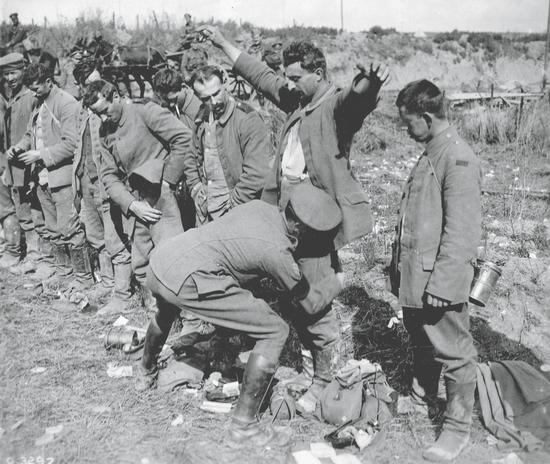
Tobin’s Tigers (29th Battalion)
The 29th Battalion was authorized on November 7, 1914. It disembarked in France in September 1915, where it fought as part of the 6th Infantry Brigade, 2nd Canadian Division. Over four thousand served with the 29th, commanded by a veteran of the Boer War, Lieutenant-Colonel Henry Seymour Tobin. Six hundred men were killed and more than fourteen hundred wounded. They would proudly become known as Tobin’s Tigers. The battalion’s honours include one Victoria Cross (Hanna). Henry Randolph Notman Clyne served with the 29th and described the experiences—at the Somme, Ypres, Vimy, Hill 70, Amiens and beyond—in his 1964 book, Vancouver’s 29th:
Our first long winter campaign against a welter of mud and caved-in trenches now began...Shelling was suspended by both sides throughout Christmas Day, and in the evening the enemy began singing and even waved across “no man’s land.” Later, the Germans erected a large notice board. The light was insufficient to read its contents but this did not affect its use as a fine target for sentries’ rifles.
30th from Vancouver Island
The 30th Battalion was authorized on October 27, 1914, drawing men from Vancouver Island and the Interior. It included men from the Nanaimo Independent Rifle Company, the 68th Earl Grey’s Own Rifles, the 102nd Rocky Mountain Rangers, the Grand Forks Independent Rifle Company and 107th East Kootenay Regiment. Over 290 men were killed and the battalion’s honours included a Victoria Cross (Prince Rupert’s Cy Peck).
30th and 31st BC Horse
The 30th BC Horse was initially under the command of Lieutenant-Colonel C.L. Bott, a veteran of the South African War. The regiment, with headquarters in Vernon, consisted of “A” Squadron from Lumby and Coldstream, “B” Squadron from Vernon, “C” Squadron from Armstrong and Enderby, and “D” squadron out of Kelowna. At the outbreak of war in 1914, the 30th BC Horse was mobilized and brought up to strength. (The 31st BC Horse was headquartered in Merritt.) Orders were received in November that the 30th BCH would amalgamate with an independent Squadron of Horse at Willows Camp in Victoria, BC, to form an overseas unit, the 2nd Canadian Mounted Rifles. The 2nd CMR Regiment won ten battle honours. Two members of the regiment, Captain John MacGregor and Major George Randolph Pearkes, won the Victoria Cross. A third VC, Gordon Flowerdew, started with the BC Horse but was serving with Lord Strathcona’s Horse when he was posthumously awarded the medal.
50th Gordon Highlanders (Victoria)
Lieutenant-Colonel Arthur Currie, of the 5th Regiment Canadian Garrison Artillery, was appointed to command the unit before the war. He later went on to command the Canadian Corps. Attempts were made by the 50th to raise an overseas battalion of its own, but without success. But they remained a militia unit, filling guard duties and sending drafts to newly raised battalions such as the 30th, 48th and 67th (Western Scots).
54th Kootenay
The 54th was raised with headquarters at Nelson. According to the popular 54th website, “a full quota of men was easily recruited and on the 15th of June 1915, the Battalion assembled in camp at Vernon, BC, for the first time. A brigade was formed here consisting of the 47th Battalion, the 54th Battalion, the 11th CMR, and, later, the Bond Battalion, all under Col. Duff Stuart.” The 54th Battalion served in the 11th Infantry Brigade, 4th Division. The 24th Field Artillery Regiment, RCA, perpetuates the 54th Battalion (Kootenay), CEF, and the 225th Battalion (Kootenay).
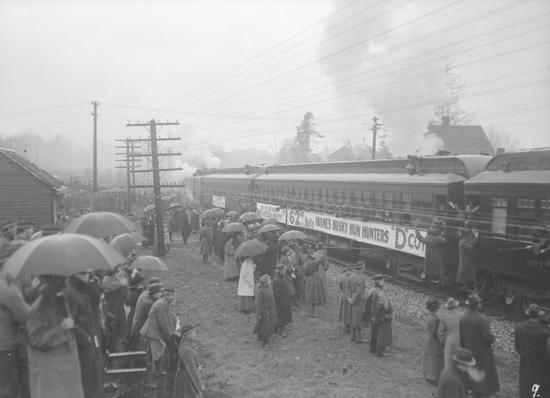
62nd Hulme’s Huskies
The 62nd Battalion was authorized on April 20, 1915, and raised men in southern BC. It provided reinforcements for the Canadian Corps in the field until July 6, 1916, when its personnel were absorbed by the 30th Reserve Battalion, CEF.
67th Western Scots
The 67th was authorized on April 20, 1915, and embarked for Britain on April 1, 1916, where it was converted to a pioneer battalion and redesignated as the 67th Canadian (Pioneer) Battalion, CEF, on May 15, 1916. It disembarked in France on August 14, 1916, where it served as part of the 4th Canadian Division in France and Flanders until April 28, 1917, when its personnel were absorbed by the Canadian Corps in the field.
Earl Grey’s Own Rifles (68th Regiment)
The 120th Independent Field Battery, RCA, originated in Prince Rupert, British Columbia, on May 1, 1914, when the Earl Grey’s Own Rifles were authorized to be formed. It was redesignated the 68th Regiment (Earl Grey’s Own Rifles) on November 2, 1914, and the North British Columbia Regiment on March 12, 1920.
Seventy Twa, 72nd Regiment Seaforth Highlanders
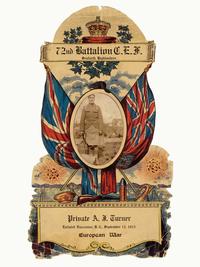
The Seaforth Highlanders of Canada was first established on November 24, 1910, by a group of Vancouverites of Scottish descent. Upon official affiliation with the Seaforth Highlanders of the British Imperial Army, the 72nd Highlanders of Canada was redesignated the 72nd Seaforth Highlanders of Canada on April 15, 1912, and the 72nd Regiment Seaforth Highlanders of Canada on December 16, 1912. Over forty officers and sixteen hundred other ranks were drafted to other Canadian infantry units, in particular the 16th Battalion, CEF. In 1916 the regiment sailed for France as the 72nd Battalion, CEF, and very soon Seaforths were committed to battle. The 72nd quickly gained a reputation among friend and foe for its professional conduct and, particularly, for patrolling and aggressive trench raids. (VC recipient Piper Richardson served for six months in the cadet corps of the 72nd Regiment.)
88th Regiment Victoria Fusiliers
The 88th Regiment was officially authorized and established as a Canadian Militia Regiment on September 3, 1912. The 88th Regiment Victoria Fusiliers and the 50th Regiment were placed on active service on August 10, 1914, for local protective duty. These regiments contributed to the 7th and 16th Battalions, Canadian Expeditionary Force.
On August 28, 1914, the Daily Colonist wrote: “Five hundred Victoria volunteers will leave this morning for Valcartier, Quebec, preliminary to sailing for the front. They will include the representatives of the 50th Gordon Highlanders and the 88th Regiment of Fusiliers. The pipers will provide music for their corps to the dock while the band of 88th Fusiliers will play their contingent from Esquimalt to the boat.” (VC recipient Piper Richardson served with the 16th Battalion.)
Warden’s Warriors, the 102nd North British Columbia
The 102nd Battalion was authorized on December 22, 1915, and was raised in Comox, recruiting in northern British Columbia. It disembarked in France in August 1916, where it fought as part of the 11th Infantry Brigade, 4th Canadian Division. The 102nd fought at the Somme. Over 670 men lost their lives during the war and honours included a Victoria Cross (Graham Lyall).
102nd Rocky Mountain Rangers—see also the 30th Battalion
On July 1, 1898, five independent rifle companies were formed in the interior of British Columbia at Kamloops, Nelson, Kaslo, Rossland and Revelstoke. The independent companies were renamed the Rocky Mountain Rangers in 1900 but remained independent companies. In 1916 the unit raised the 172nd Battalion, CEF, for overseas deployment. On arrival overseas the battalion was dispersed to augment other Canadian infantry units but received battle honours for its outstanding service. On the home front, the 102nd staffed internment camps at Revelstoke, Mara Lake and Vernon. The 102nd also provided substantial numbers to the 54th (Kootenay) Battalion.
Western Irish, 121st Battalion
The 121st Battalion was authorized on December 22, 1915. It provided reinforcements for the Canadian Corps in the field until January 10, 1917, when its personnel were absorbed by the 16th Reserve Battalion, CEF.
104th Regiment Westminster Fusiliers and the 131st Battalion (Westminster)
The 104th Regiment Westminster Fusiliers of Canada was placed on active service on August 6, 1914, for local protection duties. The regiment raised the 47th Battalion (British Columbia), CEF, which was authorized on November 7, 1914. It disembarked in France on August 11, 1916, where it fought as part of the 10th Infantry Brigade, 4th Canadian Division, in France and Flanders until the end of the war. A member of the 47th Battalion, Corporal Filip Konowal, received the Victoria Cross.
The 131st Battalion (Westminster), CEF, was authorized on December 22, 1915, and embarked for Britain on October 31, 1916, where its personnel were absorbed by the 30th Battalion, CEF, on November 14, 1916, to provide reinforcements for the Canadian Corps in the field.
158th
The 158th Battalion, which was authorized on December 22, 1915, as the 158th “Overseas” Battalion, CEF, embarked for Britain on November 14, 1916. It provided reinforcements for the Canadian Corps in the field until January 4, 1917, when its personnel were absorbed by the 1st Reserve Battalion, CEF. The battalion was disbanded on July 27, 1917.
225th Battalion (Kootenay)
The 225th Battalion, CEF, was based in Fernie and began recruiting in early 1916 in Fernie, Cranbrook, Nelson and Grand Forks. After sailing to England in January 1917, the battalion was absorbed into the 16th Reserve Battalion on February 6, 1917.
Other Prominent Units in Which British Columbians Served
Lord Strathcona’s Horse
In January 1900, Donald Smith (Lord Strathcona and Mount Royal) offered to raise and equip a mounted regiment at his own expense to serve in the South African or “Boer” War. His regiment was recruited largely from the cowboys and frontiersmen of Western Canada and members of the North West Mounted Police (NWMP). Command of Strathcona’s Horse was given to the now famous superintendent of the NWMP, Sir Sam Steele.
At the outbreak of World War I, the regiment was mobilized and trained in England. In March 1917, the regiment again saw action during the defence of the Somme. During the last great German offensive in 1918 when the British and French armies were on the verge of being split, Lieutenant Gordon Flowerdew won the regiment’s third Victoria Cross. On March 30, 1918, at Moreuil Wood, Lieutenant Flowerdew led his hundred-man squadron on a charge that defeated a superior German force of three hundred men supported by machine guns (courtesy of the Canadian Army website).
Princess Patricia’s Canadian Light Infantry
PPCLI was founded for service in World War I on August 10, 1914, and paraded for the first time at Lansdowne Park, Ottawa, Ontario, on August 23, 1914. Hamilton Gault, a prominent Montreal businessman, raised the regiment out of his own funds, making the PPCLI the last privately raised regiment in Canada.
The regiment embarked for Great Britain on September 27, 1914. It landed in France with the 80th Brigade, 27th Division of the British Expeditionary Force, on December 21, 1914, and on November 25, 1915, it joined the Canadian Corps as part of the 7th Infantry Brigade, 3rd Canadian Division, with which it fought in France and Flanders until the end of the war.
10th Battalion, the 50th Battalion, the 191st and the 192nd
These southern Alberta battalions earned a place in our memory for accepting Japanese and Chinese Canadians who were turned away from British Columbia regiments.
Pioneer Battalions
Their work was varied but consisted of consolidating positions captured by the infantry, tunnelling, mining, wiring, railroad work, deep dugout work and laying out, building and keeping trenches in repair.
Canadian Army Medical Corps
The Corps was founded in 1904 but the Great War led to a huge expansion and eventually more than half of Canada’s physicians served overseas to handle the mounting casualties. According to the Canadian War Museum, “in total, 21,453 men and women proudly wore the CAMC badge. Many of these doctors and stretcher-bearers served close to the front, and the medical service suffered 1,325 casualties during the war.” The survival rate of patients getting to the Canadian Hospitals was nearly 90 percent, one reason why the Canadian medical service was singled out by name for the special notice of the King as having “displayed marked efficiency and devotion to duty.”
Canadian Railway Troops
Canadian railway units played a major role in the construction and maintenance of railways of all gauges, including light railways, for the five British Army areas in France and Belgium.
Canadian Engineers
Throughout most of the war, each division had three field companies of engineers and one pioneer battalion. Assignments included bridge work, general engineering, tunnelling and mining.
Forestry Corps
The Forestry Corps was formed in 1916 to meet the incredible demand for duckboards, timber shoring and other wood products. The British government in its wisdom decided nobody was more experienced in the Empire to harvest timber than the Canadians. Over thirty-five thousand Canadians served in the Forestry Corps. Many members were First Nations and also underaged volunteers.
University Battalions
The 196th Western Universities Battalion had recruits primarily from the Universities of Manitoba, Saskatchewan, Alberta and British Columbia, as well as Brandon College. Students from the universities, wanting to maintain their university identity, lobbied the Minister of Militia and convinced him to authorize the formation of a western university battalion
From Our Listeners
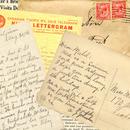
Signaller Edward Francis Hill: My great-uncle Edward Francis Hill was born about the turn of the century in Bath, England. He joined the Canadian Field Artillery as a gunner during World War I. [Read more]

Gunner William Forrest Maxwell Sr.: I don’t think I even knew that grandpa was a Great War veteran until sometime after his death in 1982. He never talked about it, period. [Read more]

POW Sidney Percy Jones: Sidney decided to leave Regina but returned to join the Canadian Army in October 1914. His army number was 73668. He was eighteen years of age and five feet eight inches tall. [Read more]
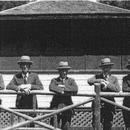
Chaplain Montgomery: Grandfather Montgomery was a chaplain at the front during World War I. Six of his sons and one daughter, a nursing sister, all served at the front as well. [Read more]

My Dad, Major Arthur Grosvenor Piddington: His father made him promise that when he died, Dad would return to Canada and look after his sisters. Dad kept his promise in 1906 and returned to Canada. His senior officers were appalled. [Read more]
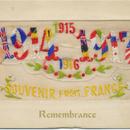
Hugh and Jean Smith: World War I interrupted my grandparents’ plans to marry and immigrate to Canada, postponing their eventual arrival in Vancouver for twelve years! Talk about a very long engagement. [Read more]
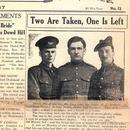
The Stewart Family—The Brotherhood—For King and Country: His father, John Stewart, was left to raise five children on his own. They were a family. War would change all of that. [Read more]

John E. Wheeler: On one occasion I noticed something addressed to Lieutenant John E. Wheeler and asked him about his time in the army. His story about enlisting in the army went something like this. [Read more]
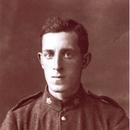
Reginald George Woods, 29th Battalion, CEF: Three children left England for much of their life, one to live in Africa, another to serve with the Indian Army and Reginald, who left at age fourteen. [Read more]
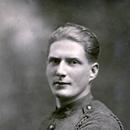
J.J. Carney: Over the next three months Bramshott suffered outbreaks of both German measles and mumps; Jim fell victim to both, spending several weeks in the isolation hospital at Aldershot. [Read more]
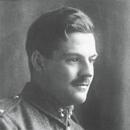
Walter John Hallam, #476612, Canadian Field Artillery: Holunteered with the Canadian Expeditionary Force at Esquimalt. His attestation papers indicate that he was a blacksmith by trade, with a scar on his left index finger and on the right forearm. [Read more]

Victoria’s Fighting Gillespie Family: George Gillespie, manager of the Bank of BC, had seven sons and one married daughter. By the end of 1914, five of those sons and the son-in-law were commissioned in uniform. [Read more]
